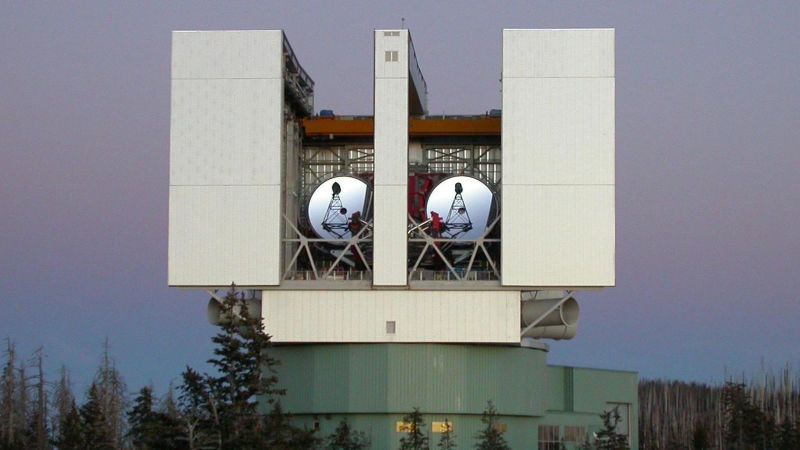Astronomers have recently made a groundbreaking discovery by observing a galaxy, named KiDS J0842+0059, that has remained unchanged for approximately 7 billion years. This galaxy is a rare example of what scientists refer to as fossil galaxies or relics, which are significant because they allow us to delve into the distant cosmic past and understand how galaxies formed and evolved. Fossil galaxies are characterized by their inactivity after an early phase of intense star formation; while most galaxies typically expand, merge, and change shape, these unique objects remain virtually unaltered, serving as time capsules that preserve a snapshot of the ancient universe.
KiDS J0842+0059 is located about 3 billion light-years away from Earth, marking it as the most distant fossil galaxy observed thus far outside the local universe—a region that extends roughly 1 billion light-years from our planet. A team of astronomers led by Crescenzo Tortora from the Italian National Institute for Astrophysics (INAF) made this remarkable find using advanced imaging techniques from the Large Binocular Telescope in Arizona. This achievement highlights the delicate balance between the galaxies’ lifespans and the rare chance of a galaxy not merging with others over billions of years.
Tortora emphasized the rarity of these relics, explaining that they managed to remain intact, largely untouched by external interactions. There are many factors at play regarding how galaxies grow and evolve through mergers; over time, the likelihood of galaxies colliding dramatically increases, making the existence of such untouched galaxies an extraordinary discovery. The research conducted on KiDS J0842+0059 has revealed critical insights about the dual-phase formation of the most massive galaxies, as described by coauthor Chiara Spiniello from the University of Oxford. Initially, there is an energetic burst of star formation, leading to the creation of compact, dense galaxies, followed by a prolonged phase forced upon galaxies due to close interactions, merging, and the consequential changes in structure.
Fossil galaxies present a stark contrast; they exhibit a remarkable stability and contain massive stars without forming new ones. During their formation period, these galaxies did not experience mergers that are common in the universe today. Therefore, studying them enables astronomers to better understand the early universe’s conditions and the initial bursts of star formation. They serve as living fossils that encapsulate the essence of the massive galaxy population that existed billions of years ago.
Michele Cappellari, a professor of astrophysics at the University of Oxford, reiterated their importance, asserting that fossil galaxies are critical for reconstructing the historical conditions of the universe. The core of the enigma surrounding fossil galaxies is why they ceased star formation so abruptly. Various studies suggest that feedback from supermassive black holes may play a role by expelling or heating gas within galaxies, effectively halting the birth of new stars.
The rigorous search and subsequent confirmation of KiDS J0842+0059, which was initially detected in 2018 at the VLT Survey Telescope in Chile, showcases the advanced observational capabilities of modern astronomy. Researchers require high-resolution imaging to accurately categorize such distant and diminutive celestial bodies, as conventional telescopes often struggle to capture these objects clearly.
As one of the few confirmed fossil galaxies of this detail alongside NGC 1277—previously verified by the Hubble Space Telescope in 2018—KiDS J0842+0059 allows us to examine the properties of galaxies from earlier cosmic epochs. It has been designated as an “extreme relic,” indicating that an astonishing 99.5% of its stellar mass was formed during the universe’s infancy, with little to no developmental activity afterward.
Astrophysically, this noteworthy fossil galaxy exhibits star distributions dense enough to challenge the formation of similar solar systems compared to our Milky Way. While it features stars and planets, the overcrowding makes conditions more complex, as many stars occupy the same relatively small volume.
Looking ahead, both astronomers involved are optimistic about the potential to discover more fossil galaxies with powerful upcoming telescopes like the European Space Agency’s Euclid, launched in 2023. Euclid is anticipated to enhance the exploration of dark matter and dark energy while simultaneously detecting ultra-compact galaxies, offering a broader perspective of the universe that may include even more fossil candidates.
In conclusion, the confirmation of KiDS J0842+0059 exemplifies the remarkable strides being made in the field of astronomy and the ongoing efforts to unravel the mysteries of the cosmos. As our technology and observational abilities progress, we are poised to uncover more relics, deepening our understanding of the universe’s evolutionary history and the formative processes that governed its earliest days.












